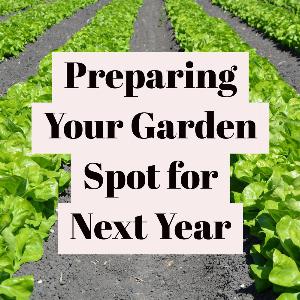Work done on your soil in the fall is even more important than the work done in the spring, for the compost and nutrients you add have time to break down and become available to the plants in the spring. Start by clearing away all the dead plant debris from this year’s garden, because there are insects in it that could survive even if they were tilled into the soil. Spade or till the ground once over to a depth of eight to ten inches, loosening and aerating the soil. Then till in a good layer of compost or other organic material such as Nutri-Mulch, or old grass clippings, dead leaves, old hay, or whatever. You could even do this several times if your soil has a lot of clay or sand. It is practically impossible to add too much organic material. Along with the compost, till in a balanced fertilizer, like 16-16-16, that is high in phosphate and potash, the second and third numbers in the fertilizer formula. These two nutrients are most needed by growing vegetables, and are slow to break down into the soil. Applying them in the fall will give your garden a jump start in the spring. Along with the fertilizer, till in slow acting Hi_Yield soil sulfur to reduce the alkalinity of your soil, especially where the tomatoes will be planted. Have in mind a plan for next year’s garden layout and put it on paper for reference in the spring. Remember to rotate your crops, and don’t plant potatoes, eggplant, tomatoes or peppers in the same place two years in a row, nor where any of the others were planted. Plant heavy feeding leaf crops like lettuce, spinach, and chard where the beans or peas were this year. Where you plan to put root crops like beets, carrots, rutabagas and parsnips, till in a good amount of bone meal, which is a great source of phosphate. Adding this in the fall, as well as in the spring, gives it ample time to break down into the soil by the time the plants need it. Root crops have to have plenty of phosphate to achieve greatness. After this fall preparation, you can top off your garden spot in the spring with a thorough tilling and additional adding of nutrients and organic material then. This is the foundation upon which your success as a gardener rests.
Let's talk for a minute about preparing your garden spot for next year. . .




